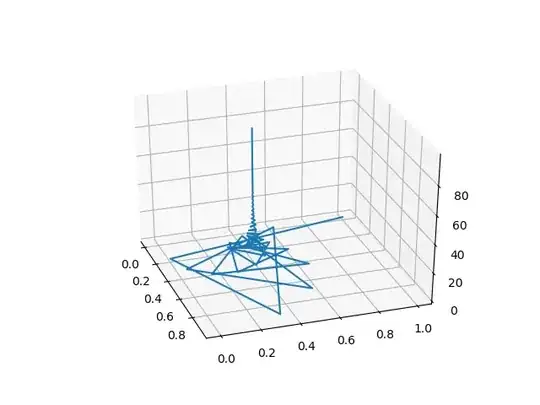Introduction:
Recently I found out that $i^i \approx 0.20788$ has no imaginary part. I got interested and then wanted to know whether there are other $n$ for which $\underbrace {i^{i^{i^{.^{.^{.^{i}}}}}}}_{n \ times}$ has no inaginary part.
So I wrote this python script (I'm a beginner at python, could be very bad code :) which plots what I call the $i-Tower\ up\ to\ n = 100$. It looks like this:

Question:
Let's use this convention: ${}^ni = \underbrace{i^{i^{i^{.^{.^{.^{i}}}}}}}_{n \ times}$.
- Why is the sequence ${}^ni\ |\ n \in \mathbb{N}$ converging?
${}^{20}i \approx 0.48770 + 0.41217i$
${}^{60}i \approx 0.437584 + 0.360535i$
${}^{100}i \approx 0.43829+ 0.36059i$
What I already noticed is that the angle between the lines you can draw from ${}^ni$ over ${}^{n+1}i$ to ${}^{n+2}i$ is $<90°$.
Is that angle equal for all $n$?
Is there a way to give the exact value of $x = {}^ni \ $with$\ {n \rightarrow \infty}$?
What is the connection between $i$ and $x$. Is $x$ a special complex number that is maybe already known or comes up in other places?